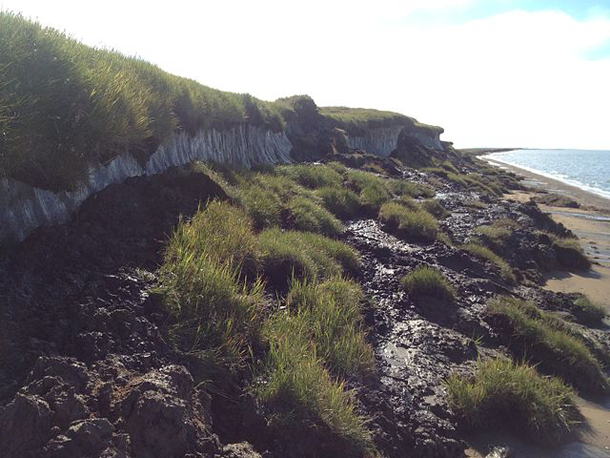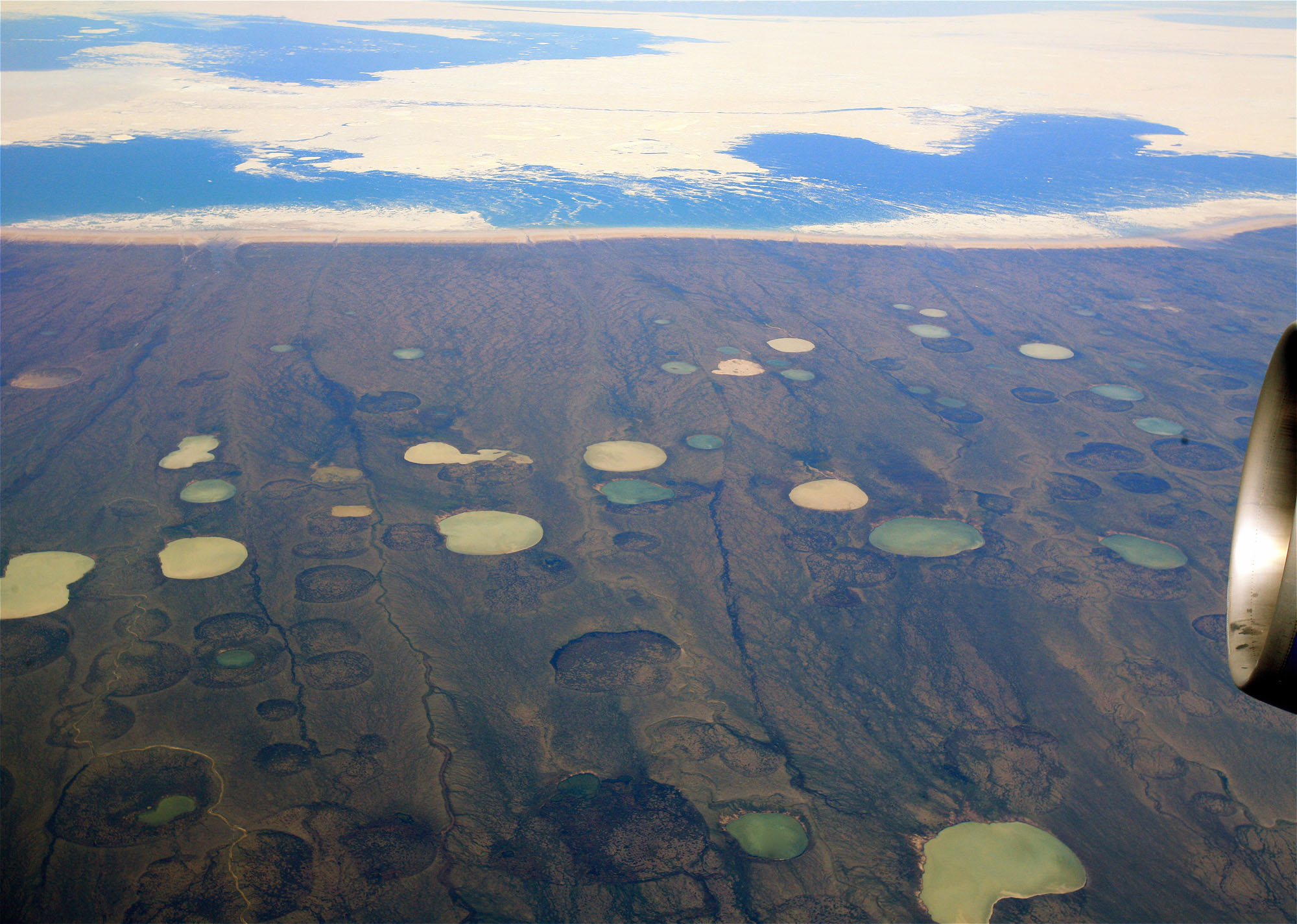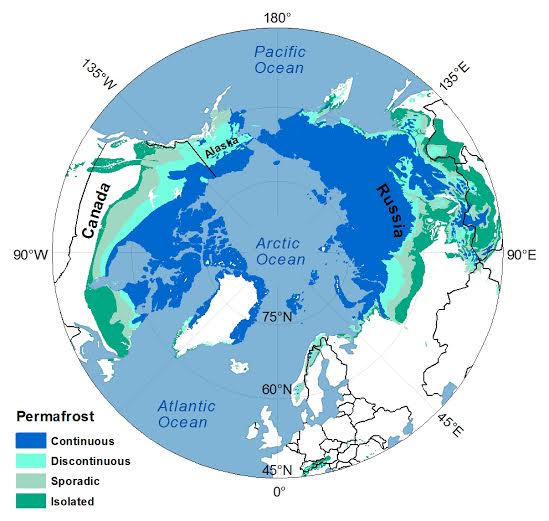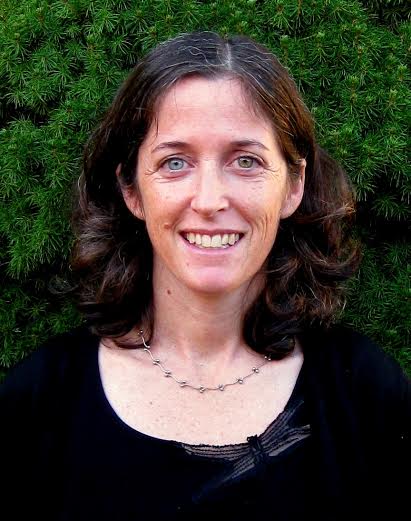Losing Frozen Earth Could Cook the Planet
Air Date: Week of June 12, 2015

As much as 70% of the surface permafrost in the northern hemisphere may be gone by the end of this century. (Photo: Awing88, Wikimedia Commons CC BY-SA 3.0)
As temperatures increase globally, thawing permafrost starts to release large amounts of carbon dioxide and methane, which, in turn, raise global temperatures. Woods Hole Research Center’s Susan Natali tells host Steve Curwood about new measurements of the possible carbon loss, and how this positive feedback loop has very negative consequences and research shows we are getting close to runaway global warming.
Transcript
CURWOOD: From the Jennifer and Ted Stanley Studios in Boston and PRI, this is Living on Earth. I’m Steve Curwood. The thawing of the permafrost in the far north is part of “growing irreversible feedbacks from the poles to Mount Everest,” and we are “reaching thresholds where only a new ice age reverses impacts.” That’s the word at the recent round of UN climate negotiations in Bonn from scientists whose alarming projections show we are at risk of slipping into runaway global warming.
In a moment we’ll have more on the negotiations and the G7 pledges to stem greenhouse gas emissions. But first, we turn to scientist Sue Natali of the Woods Hole Research Center in Massachusetts, who told negotiators about the new data and projections of what science calls “permafrost carbon feedback.” She joins us on the line now. Welcome to Living on Earth.
NATALI: Thank you very much. It’s great to be here.
CURWOOD: So, first of all, what's permafrost?
NATALI: Permafrost is perennially frozen ground. It's ground that remains frozen for two or more consecutive years. In some areas, permafrost has been frozen for up to 40,000 years. Permafrost can comprise any material that's in the ground that's below zero degrees Celsius, so it can contain rocks, frozen soil, organic material, so that you can find whole plant parts or trees or tree roots; you can find frozen bones.

Melting permafrost can create thaw ponds like those above, near Hudson Bay. (Photo: Steve Jurvetson, Wikimedia Commons CC BY 2.0)
CURWOOD: What happens when permafrost starts to thaw out?
NATALI: So one of the things that happens when permafrost thaws is you can get ground collapse, or ground subsidence, and the reason for that is because permafrost contains ice. When the ice melts, the ground can collapse. The other thing that can happen is if permafrost completely thaws, so that you get a breach, total breach in the permafrost layer, you can get drainage of groundwater and this can lead to drying. One of the things that we're seeing in boreal and Arctic regions is an increase in fire. If the soil dries, this may further amplify this increased fire frequency.
CURWOOD: So how does permafrost affect the global climate?
NATALI: Permafrost thaw affects global climate because there's currently a vast storage of carbon that's frozen in permafrost. So our current estimate is that there's about 1,500 billion tons of carbon in permafrost. That carbon is frozen. It's in the form of organic matter, so when the permafrost thaws, microbes decompose or eat that organic matter, and just as we respire carbon dioxide, so do microbes. So microbes release carbon dioxide into the atmosphere, and they also release methane. And methane is important because it's a much more potent greenhouse gas than carbon dioxide.

Permafrost currently comprises about 25% of the Northern Hemisphere land surface. (Map created by Greg Fiske. Data from Brown, et al. 2001 NSIDC)
CURWOOD: So why is it thawing?
NATALI: Permafrost is thawing as a result of climate change. In the Arctic, the air temperatures are warming twice as fast as the rest of the planet, and this is projected to continue into the coming decades and centuries.
CURWOOD: How much permafrost is there?
NATALI: Permafrost regions comprise about 25% of the northern hemisphere land area.
CURWOOD: And how much of it do we expect to lose?
NATALI: Our current projections are that we can expect to see a 30 to 70% decline in near surface permafrost, and that range in large part is driven by our different emission scenarios. So under low emissions we can expect about a 30% decline in permafrost. But under our current emissions scenario it’s up to 70%.

Above, Natali carries a carbon dioxide flux chamber, used for measuring CO2 uptake by plants and release from plants and soils. (Photo: Christy Lynch Designs)
CURWOOD: What are we talking about in terms of carbon winding up in the atmosphere here? How might this affect the whole planet?
NATALI: Right. So if 70% of our permafrost thaws, our current estimate is that by the end of this century, we can expect to lose 130 to 160 billion tons of carbon from permafrost as a result of thaw. So to put that in perspective, in 2013 the United States emitted 1.4 billion tons of carbon from fossil fuel combustion and cement production. Greenhouse gas released from permafrost regions is on par with emissions from the United States.
CURWOOD: So how does the carbon in the permafrost compare to other sources, other places, where carbon is on the planet?
NATALI: The amount of carbon in permafrost is almost twice as much carbon as is currently contained in the atmosphere. There's three times more carbon stored in permafrost than is contained in the world's forest biomass on a global scale, and the amount of carbon in permafrost is on par with our current estimates of fossil fuel reserves. And the thing that I think is important about these numbers is that when we think about the world's forests and deforestation, in theory, we can control deforestation and land use change. We can control our fossil fuel emissions, but once permafrost starts to thaw, we cannot control how much carbon dioxide and methane is released by microbes into the atmosphere from thawing permafrost.
CURWOOD: How much is the release of carbon from permafrost factored into the current climate negotiations?
NATALI: Permafrost carbon emissions were not included in the last IPCC report, but scientists are working to incorporate permafrost carbon release into Earth system models, so that our next climate projections can include this additional carbon loss as a result of permafrost thaw.
CURWOOD: So you're not a climate modeler, Dr. Natali, but if you factor in permafrost thaw to climate projections, how does that change things do you think?

Dr. Susan Natali researches the effects of climate change on terrestrial ecosystems at Woods Hole Research Center in Falmouth, MA. (Photo: Christy Lynch Designs)
NATALI: Well, international negotiators had set two degrees Celsius as an upper limit, an acceptable level of climate change. To remain below the two degrees Celsius target, our total emissions are limited to 790 gigatons, or billion tons, of carbon. We've already released about 500, so that leaves us a little under 300 billion tons. We can expect 150 of that to be taken up as a result of permafrost thaw. So this makes it very challenging for us to stay below this two degrees Celsius. Even under our lowest emissions scenario, we're pretty close to 2.2 degrees Celsius. We're about a quarter of a degree away from that. Factoring in permafrost emissions is extremely urgent, and what this means is this puts greater urgency on reducing our fossil fuel emissions.
CURWOOD: So, alright, I'm sitting down, you can tell me, if we get all the carbon in the permafrost into the atmosphere, how warm is our planet, do we know?
NATALI: Not all of the carbon that's in permafrost will be released. Our current expectations is about 10 to 15% of that carbon will be released into the atmosphere. That said, if all of the carbon of permafrost was released, at that point, this is not going to be a habitable planet for humans.
CURWOOD: Sue Natali is a Permafrost Expert with the Woods Hole Research Center and co-author of a paper recently published in “Nature.” Thanks so much for taking the time with us today, Sue.
NATALI: Thank you so much for having me.
Links
Woods Hole Research Center press release on permafrost
“Climate change and the permafrost carbon feedback” (coauthored by Susan Natali)
Scientists raise permafrost alarm at UN climate talks
Living on Earth wants to hear from you!
Living on Earth
62 Calef Highway, Suite 212
Lee, NH 03861
Telephone: 617-287-4121
E-mail: comments@loe.org
Newsletter [Click here]
Donate to Living on Earth!
Living on Earth is an independent media program and relies entirely on contributions from listeners and institutions supporting public service. Please donate now to preserve an independent environmental voice.
NewsletterLiving on Earth offers a weekly delivery of the show's rundown to your mailbox. Sign up for our newsletter today!
 Sailors For The Sea: Be the change you want to sea.
Sailors For The Sea: Be the change you want to sea.
 The Grantham Foundation for the Protection of the Environment: Committed to protecting and improving the health of the global environment.
The Grantham Foundation for the Protection of the Environment: Committed to protecting and improving the health of the global environment.
 Contribute to Living on Earth and receive, as our gift to you, an archival print of one of Mark Seth Lender's extraordinary wildlife photographs. Follow the link to see Mark's current collection of photographs.
Contribute to Living on Earth and receive, as our gift to you, an archival print of one of Mark Seth Lender's extraordinary wildlife photographs. Follow the link to see Mark's current collection of photographs.
 Buy a signed copy of Mark Seth Lender's book Smeagull the Seagull & support Living on Earth
Buy a signed copy of Mark Seth Lender's book Smeagull the Seagull & support Living on Earth

